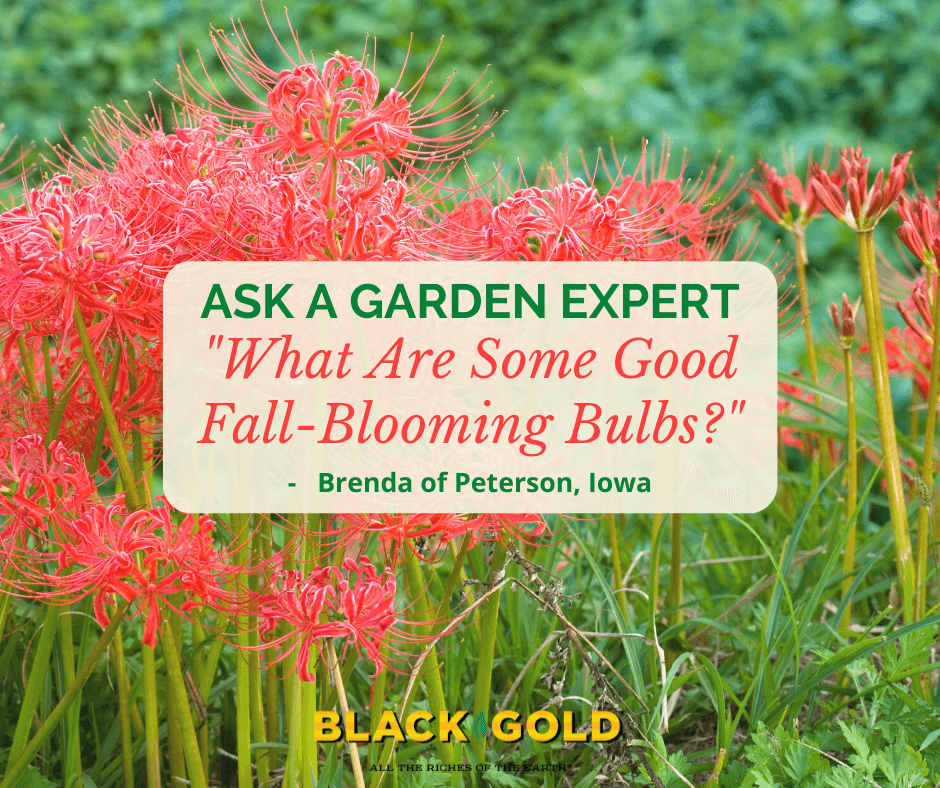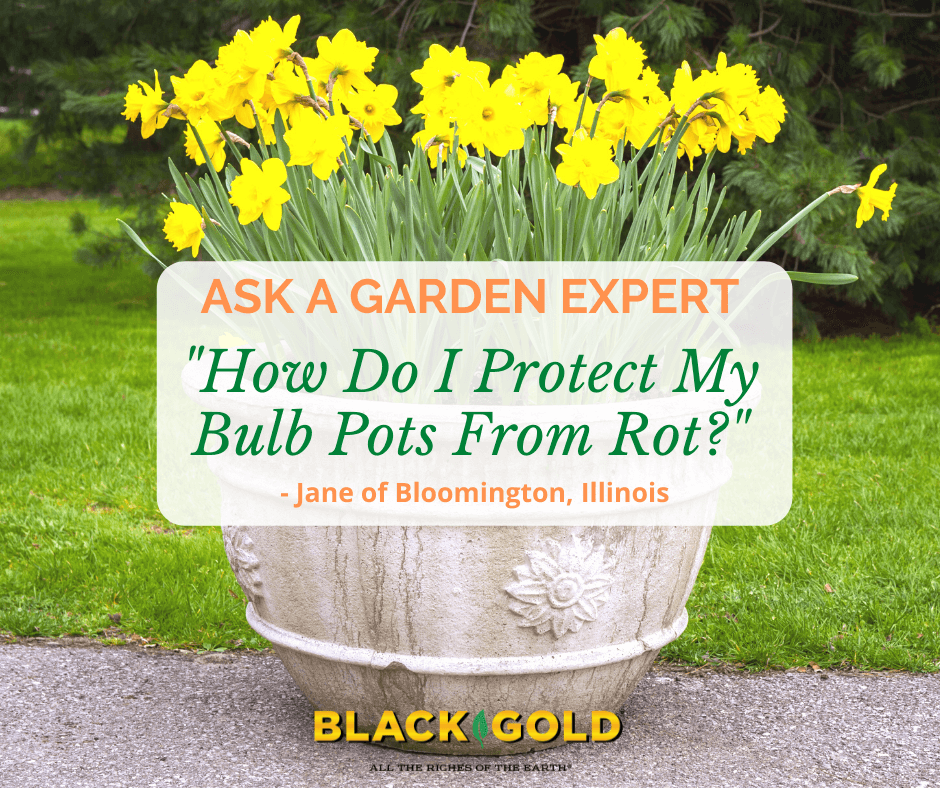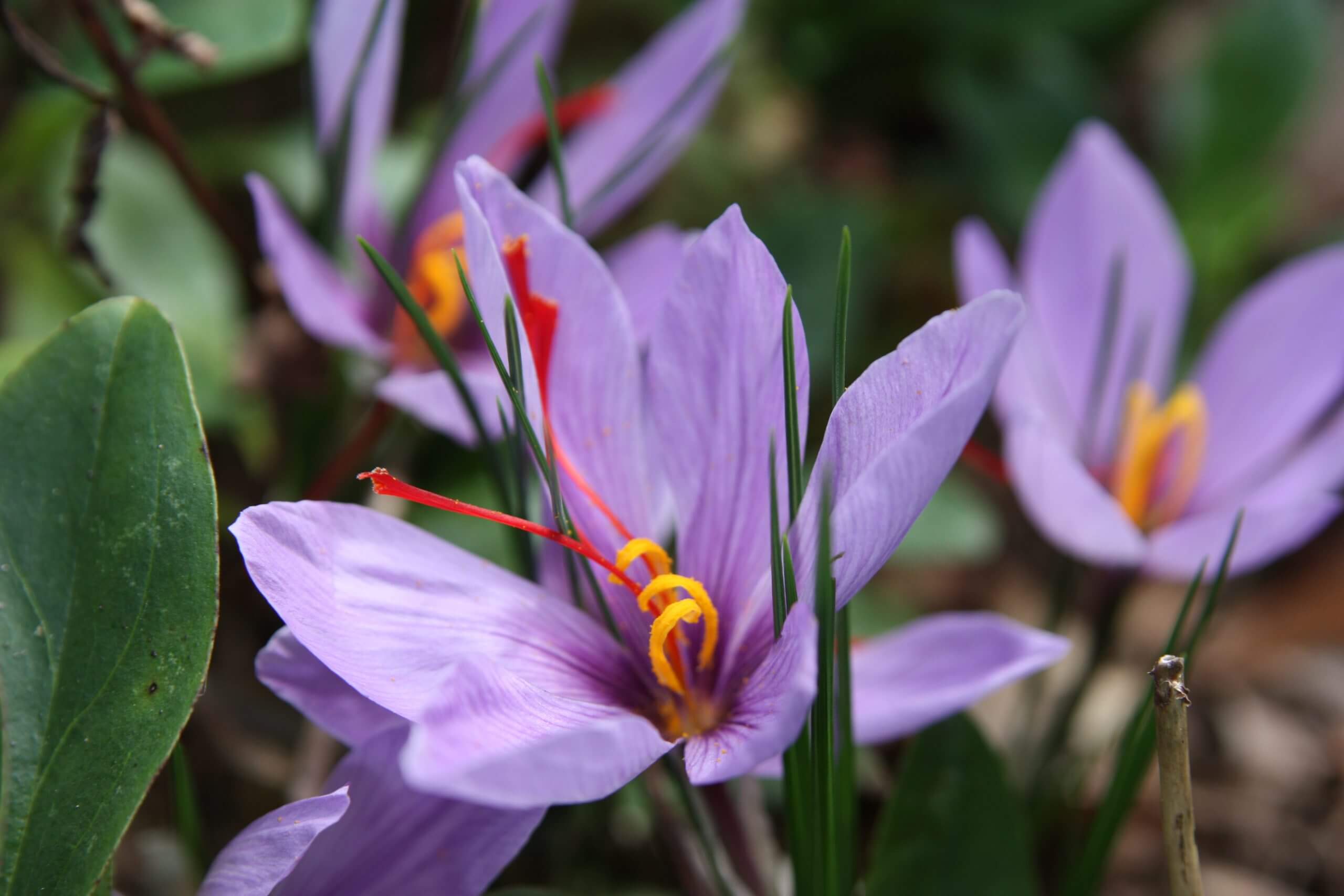
“What are some good fall-blooming bulbs? I can never seem to find any that bloom in the fall. Thanks.” Question from Brenda of Peterson, Iowa
Answer: There are quite a few fall bulbs that will grow well in your USDA Hardiness Zone 5a garden. Here are some of the best. Follow the links on each plant name for good bulb sources!
Fall Bulbs for Midwestern Gardens (Zone 5)
Red Spider Lily (Lycoris radiata) and Yellow Spider Lily (Lycoris aurea) are two South African surprise lilies that bloom from late summer to fall and are hardy to zone 5. They look really lovely together and bloom on tall naked stems that give them a striking look in the garden.
Fall Crocus (Crocus spp.) come in all different colors and forms and look very much like their spring counterparts. Most are very hardy and some, such as Crocus kotschyanus, naturalize or spread in beds and lawns. One that I highly recommend is the saffron crocus (Crocus sativus) from which you can collect your own saffron! (Click here to learn more about growing saffron.)
Colchicum (Colchicum spp.) comes in lovely shades of pink, white, and lavender, and most are quite hardy. They look very much like giant crocuses, but they are surprisingly unrelated. The double-flowered ‘Waterlily‘ is especially pretty. The only downside is that these plants are toxic, so refrain from planting them if you have small children or pets that might handle or consume them. (Click here to learn more about Colchicum toxicity.)
Fall Snowflakes (Leucojum autumnale (Acis autumalis)) is a rare but wonderful fall-blooming bulb from the Iberian peninsula that is hardy to your zone. Its white, bell-shaped flowers look very springy and mingle well with other perennials.
Happy gardening,
Jessie Keith
Black Gold Horticulturist



